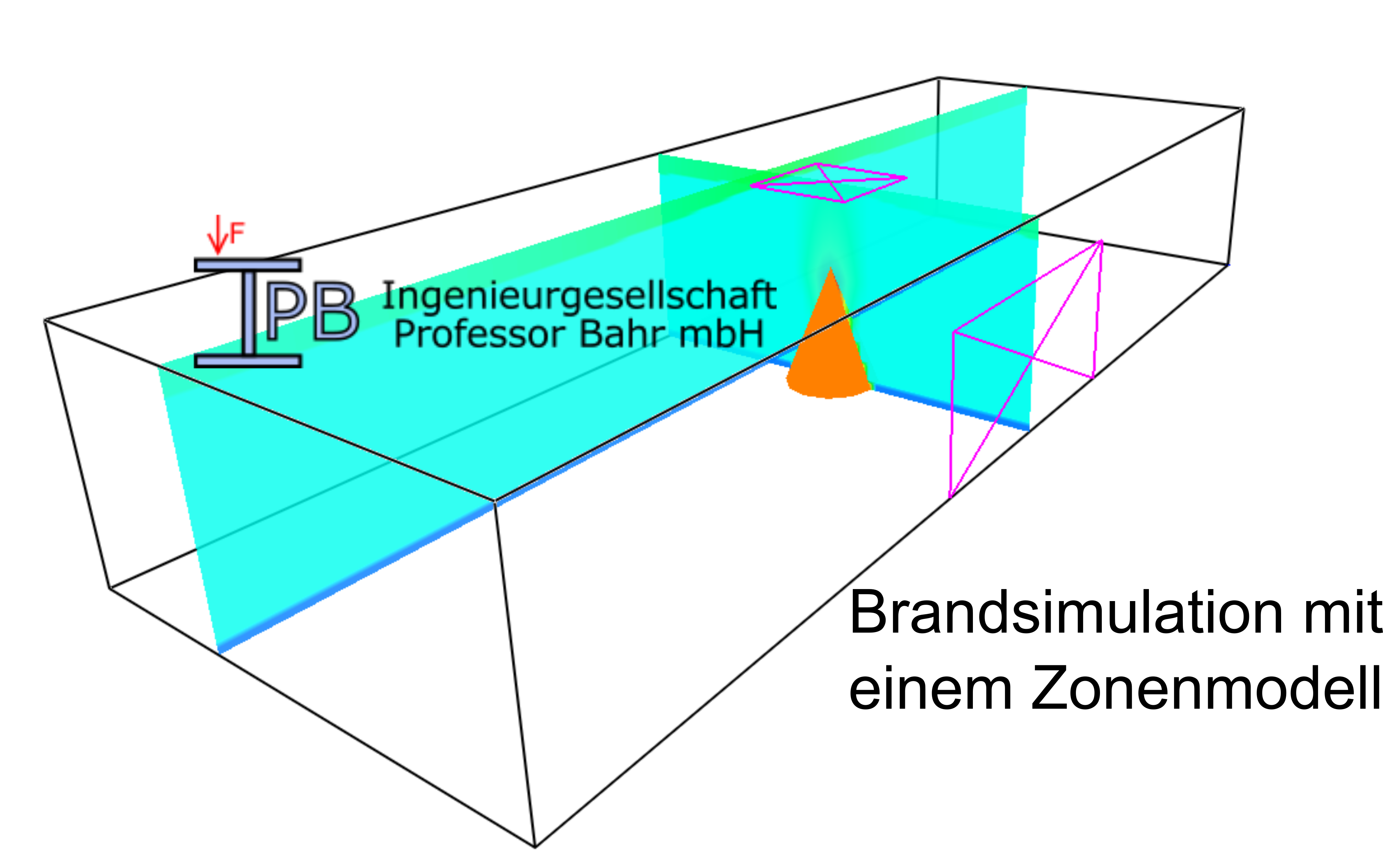Fire simulation
How can fires be simulated?
For the fire design of structural members, fire temperatures are often needed as input values. In principle, these can be determined with three different models for simulating fires, which are associated with a sharp increase in the calculation effort:
- Parametric temperature-time curves;
- zone models;
- field models or Computational Fluid Dynamics (CFD).
Parametric temperature-time curves
The easiest way to determine the fire room temperatures is to use parametric temperature-time curves. The decisive parameters for the calculation are the fire load and the opening area. Furthermore, a distinction is made between a ventilation-controlled and fire-load-controlled fire.
In a ventilation controlled fire, the opening area is the limiting factor for the fire, while in the latter case the fire load limits the extent of the fire. The informative Annex A of the Eurocode EN 1991-1-2 contains a corresponding calculation algorithm. The procedure applies to fire compartments without openings in the roof with a maximum floor area of 500 m² and a maximum height of 4 m. The fire compartment is assumed to burn out completely.

Zone model
In the case of zone models, the room area under consideration (fire room and subsequent rooms) is divided into volume-variable zones. It is usually divided into 2 to 20 zones, in which the energy and mass balance is set up and calculated for each time step (approximately one second). The zones are characterized by homogeneous states. Furthermore, for the sake of simplicity, momentum conservation is only taken into account in the area of the fire plume. Due to the lower calculation effort in comparison to the other models, the zone models have so far prevailed in practice. The figure shows a fire simulation for a natural fire in an industrial hall.
Download
thouse4_01.avi
Simulation of the hot gas temperatures in a house fire.
thouse4_smoke.avi
Simulation of smoke emissions from a fire in a house.
Field models
In contrast, the numerical requirements for the field models increase sharply, since the different spaces are modeled by non-linear, partial differential equations. These are based on fluid mechanics (Navier-Stokes equations) and the continuity conditions of the masses, conservation of energy and momentum.
To solve these basic equations, the spaces are divided into very small control volumes in which homogeneous states apply. The solution, which is also very finely structured in terms of time (calculation steps of 0.1 to 0.01 seconds), results in a considerable numerical effort, which still stands in the way of widespread use of these calculation models today. There are currently many different field models.
The two simulations of a fire in a single-family house above, which are available for free download, are taken from the example collection of the field model „Fire Dynamics Simulator“ (FDS) used. This software is available free of charge from the National Institute of Standards and Technology (NIST). Depending on the discretization, the calculation for complex problems can take several days, even on modern computing clusters. In contrast, a zone model only requires a computing time of the order of minutes due to the considerable simplifications.
My service
I would be happy to investigate natural fire scenarios for your project. This often allows me to increase the profitability of your project. As a fire protection expert, I particularly recommend the use of zone models.